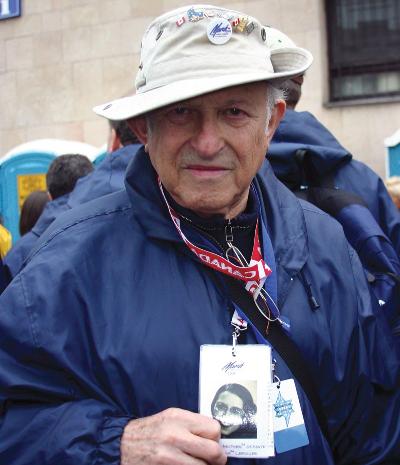Share
Human Rights Voices
While the UN devotes its human rights operations to the demonization of the democratic state of Israel above all others and condemns the United States more often than the vast majority of non-democracies around the world, the voices of real victims around the world must be heard.
Canada, December 28, 2025
Holocaust survivors shaken by mezuzahs torn down in Toronto
Original source
The recent removal of mezuzahs from a Toronto residential building housing Holocaust survivors has deepened fears about rising antisemitism, striking at what residents say is the most intimate place of all: their homes.
For the second time in a month, mezuzahs were ripped from apartment doors in a residential building in Toronto where several Holocaust survivors live, March of the Living said in a press release on Saturday. Earlier in December, Canadian media reported the removal and theft of approximately 100 mezuzahs from another residential building in the city.
The latest incident occurred during the Christmas holidays, when mezuzahs were removed from several housing units in a building located about two kilometers from a synagogue. Toronto police have opened an investigation and are treating the incident as a hate crime. No suspects or official motive have yet been identified.
For the elderly residents, many of whom survived the Holocaust, the act has carried a particularly heavy emotional toll.
“I feel vulnerable—they invaded under my skin,” said Nate Leipciger, 97, a survivor of Auschwitz-Birkenau and Dachau who lives in the building.
Leipciger told the Canadian Jewish News that although he was not home at the time of the incident, the removal of Jewish symbols has left him shaken—especially amid a global surge in antisemitic violence, including the deadly attack earlier this month at Bondi Beach in Australia.
“It’s a different time, but the hatred is the same. And, living in Canada, I thought we were safe from this,” he said.
A lifetime of bearing witness
Leipciger has spent decades educating young people about the Holocaust. He has led Canadian youth delegations to the March of the Living 21 times and plans to attend the march for the 22nd time on Holocaust Remembrance Day, April 14, 2026. Each year, he delivers his testimony inside the barracks at Birkenau, where he was imprisoned, speaking to thousands of students.
In June 2025, Leipciger was awarded the Order of Canada for his lifelong commitment to Holocaust education.
At the 2024 March of the Living closing ceremony at Auschwitz-Birkenau on Yom Hashoah, Leipciger lit the “Torch Against Antisemitism.”
“I stood on this ramp [where Dr. Josef Mengele made his infamous selections] 81 years ago. Every day could have been my death. My family’s ashes are spread all over this land,” he said. “Remember: Jewish rights are also human rights! Stand up against antisemitism and fight hate and falsehood wherever you are!”
Calls for action
Another resident of the building, Judy Weissenberg Cohen, 96, who has also participated in multiple March of the Living trips, called for stronger government action.
“They have to bring in legislation that effectively, really effectively, can curb this kind of hatred,” she said.
In an interview with the Toronto Sun, Leipciger said the current climate has forced him to confront fears he never thought he would feel again in Canada.
“If this had happened in the 1960s or 1970s, this type of a climate would induce me to leave Canada and go back to live in the security of Israel, to avoid antisemitism,” he said. “It’s the exposure to our children, that’s what bothers me the most, the idea instilled in our young people that being Jewish is wrong.”
Leipciger said what troubles him most is seeing younger generations feel pressured to hide their Jewish identity.
“That bothers me more than anything else, more than even my personal security, is the fact that my great-grandchildren are exposed to hatred and feel there’s something wrong with them, maybe they should hide their Jewishness,” he said. “Don’t hide your symbols, stand up to whoever it is, because they want you to cower and hide your identity, because that’s what they need.”
‘We will never let hatred win’
Scott Saunders, CEO of the International March of the Living, said the incident was both heartbreaking and unacceptable.
“I think of all that Nate endured during the Holocaust. Now, as he approaches his 98th year, it’s unthinkable that he has to worry about antisemites desecrating Jewish symbols in the very building in which he lives, along with other Holocaust survivors, in his adopted country Canada,” Saunders said.
“Like Nate, in April 2026, we will march proudly with some 100 Holocaust survivors and thousands of young students from around the globe, against antisemitism and all forms of intolerance and discrimination and in support of humanity and justice,” he added. “We will never let the forces of hatred and evil win.”

